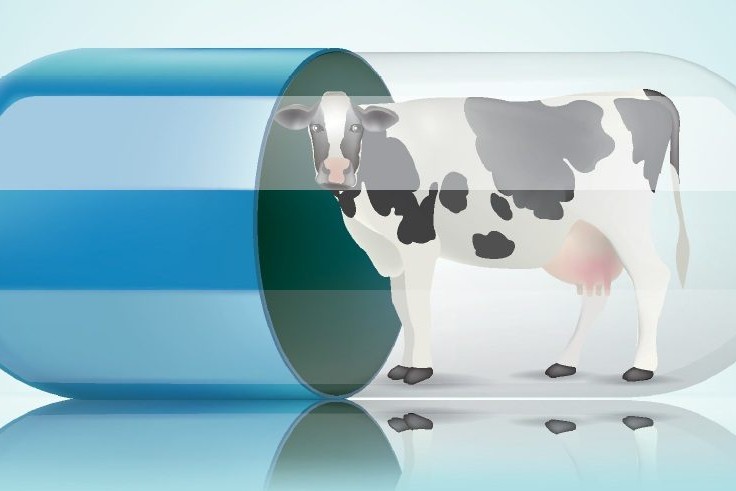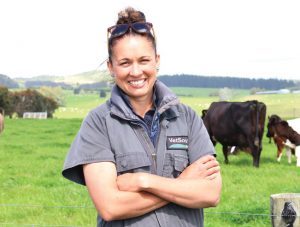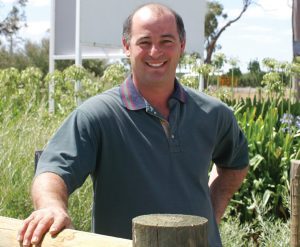Antibiotics and the health of nations
In recent years, the human medical sector has consistently raised concerns regarding the potential overuse of antibiotics in food-producing animals – specifically those critical to human health.

Today it’s a global discussion, with some countries taking more of a hard-line on the subject of antibiotics in farming than others.
New Zealand and Australia are not fully in step because – in the main – Australian dairy farmers have access to a wider range of top-shelf antibiotics, while NZ has greater access to various vaccines.
The NZ Veterinary Association’s lofty goal is that by 2030, the country will no longer need antibiotics for the maintenance of animal health and wellness.
Veterinarian counterparts Dr Sunita McGrath and Dr Robert Bonanno, from NZ and Australia respectively, agree on pretty much everything.

Except perhaps about the uncompromising approach NZ’s Ministry for Primary Industries (MPI) has to reducing onfarm antibiotic use through the Restricted Veterinary Medicines (RVM) list.
Dr Bonanno has spent three decades in the industry, including combining farming and his own veterinary practice for 14 years. A former president of the Australian Cattle Veterinarians (2010-12), he completed post graduate study in the United States, and worked in China as a vet director for Fonterra’s International Farming Venture.
In January 2019, he joined Apiam Animal Health (Australia), with the plan to develop a herd-health partnership plan, now known as ProDairy. The ProDairy partnership is delivered by more than 100 veterinarians, with a strong focus on preventative health and collaborative work with its farmers. It’s an achievement Dr Bonanno says he could never have achieved as an individual practitioner.
Dr McGrath is a shareholder and one of 20 large animal vets at VetSouth, a progressive animal health business with clinics across Southland and South Otago. It includes sister clinics on the West Coast and Waikato’s Morrinsville. Dr McGrath’s husband, Dr Hayden Dore, is also a veterinarian in VetSouth, which services 200,000 cows in just their region alone.
DRUG ISSUE ‘VEXED’”

The term “knowledge is power” is music to the ears of both these skilled practitioners. Both are actively engaged in focusing on early intervention, and digging deep to deliver better outcomes onfarm; however, there are several layers involved in achieving that, and they know it’s easy to lose sight of the cows in this conversation.
Their effectiveness is still dictated by their clients’ willingness to involve veterinarians early, and to treat animals with the right dose of the right drug, for the recommended time.
Dr Bonanno cuts to the chase on NZ’s RVM mandates at a political level. He knows it’s one thing to say “no” to antibiotic use, and potentially quite another to be standing beside a cow that could be saved.
“Generations of almost single-trait selection for fertility in the New Zealand dairy herd has resulted in an incredibly fertile cow, but as more selection for production or other traits occurs in the housed or barn cattle, the importance of health monitoring, transition feeding and early interventions will become more apparent,” he says.
“The drug issue is a vexed one. New Zealand has made a conscious decision to reduce antibiotic use – which at face value is a great thing, and it sounds awesome for the New Zealand dairy industry.
“However, the potential welfare implications cannot be ignored of failing to proactively prevent, diagnose or effectively treat disease in the face of restrictions or mandatory reductions in antimicrobial use [an agent that kills or stops the growth of microorganisms].
“In Australia, I take the approach of using as little [antibiotics] as possible, but as much as necessary.
“When it comes to antibiotics, I don’t favour blanket bans or targeted reduction in antimicrobial use without an equal measure of implementing preventative-health strategies, because I fear animal wellbeing may inadvertently be impacted.”
Dr Bonanno confirms that in Australia, Apiam Animal Health with its ProDairy partnership has taken a slightly different route to NZ, albeit with a similar goal to reduce overall reliance on antimicrobials.
He says he is also thinking more “big picture” than at any other time in his career, adding that he is enjoying the results of that work, and the closer regular involvement with the herds under his care.
“I try more now to not simply describe a syndrome, for example ‘calf pneumonia’ – importantly, I want to diagnose the cause of the disease.
“I try to work with the farmer to look for where the breakdown is happening – for example hygiene, colostrum management, nutrition – and I look for how we could implement prevention strategies like a vaccine, testing for failure passive immunity transfer [the failure of the neonatal calf to absorb adequate colostral immunoglobulins within the first hours of life], shed design, ventilation, stocking density and managing the calving environment to address the root cause of the problem rather than just using an antibiotic after the disease has been observed.
“Where I think things might potentially be going awry on some farms is if there is not a culture of contacting the vet for those ‘routine sicknesses’ like pneumonia, calf scours, mastitis and lameness, for example. So, their symptoms are treated, but the cause of the outbreak isn’t always addressed.
“It potentially means the right balance of prevention strategies may not be implemented or even considered, and – if New Zealand simply mandates reduced antibiotic use – it could lead to adverse animal welfare outcomes in those instances.”
LESS DISEASE MEANS FEWER ANTIBIOTICS
Dr Bonanno says ProDairy is changing conversations in a slightly different way.
“Probably the favourite part of my job now is working with larger dairy farmers who over the years had decided that they don’t need to call the vets out, and they feel they just need the drugs.
“Over time as I build up trust with them, they realise that I can help reduce antibiotic use – not by restriction of their access to drugs. On the contrary, I try to make it convenient for them. But I also challenge them and their acceptance of ‘normal’, and coach them to actually do better.
“Because nothing reduces antibiotic usage more than lowering the incidence of disease from happening.”
Dr Bonanno says by measuring and reporting antibiotic use onfarm and identifying the key reasons they are used, he and his team are able to reduce antibiotic use without compromising animal wellbeing or mortality rates.
“I have never set foot on a dairy that couldn’t benefit from more veterinary intervention and involvement, but most farms see us as a cost and not an asset, which is why we created ProDairy.”
Cow collars and other onfarm technologies are fast becoming a vet’s right-hand helper.
“I am an unashamed fan, and like to measure animal health data – collars, tags, boluses and so on. I believe that they are the future already here, and that they provide invaluable information for dairy herds. But like everything – such as herd testing, and genomic testing, for example – the data is often seriously under-utilised, and people fail to capture its real value.”
On the other hand, Dr McGrath stands by MPI’s decision to regulate a tight RVM list. NZ’s RVMs are classified into a ‘green’, ‘orange’ or ‘red’ category (see descriptions in panel).
“I never come to work and wish I had access to more ‘red’ light drugs to help animals,” Dr McGrath says.
“Furthermore, I don’t believe the drugs New Zealand vets have access to is limiting our success.”
Dr McGrath is the key vet for about 50 farmer clients within VetSouth’s Winton practice, and farmers on her roster usually contact her directly – either by phone, a text or through FaceTime. She says the trust within those relationships is what helps drive positive animal-health results.
“We encourage our clients to contact us early, and they know they will get a direct, honest answer. If I think a visit is needed, most of them will get me out.
“We do push and educate farmers to choose the ‘green’ and ‘orange’ antibiotics over the ‘red’ light options. We are doing our bit for human health to slow down the resistance of antibiotics and, generally, farmers in New Zealand are very much onboard with this.
“We don’t want animals to suffer, obviously, and we are not saying you can’t have the ‘red’ drugs. We still have farmers that use Tylosin and Ceftiofur, but that does involve a discussion.”
Like Dr Bonanno, Dr McGrath says the key to a good outcome is early intervention and the right diagnosis.
“Whether it’s doing a milk culture, a swab, a biopsy, or just a clinical examination diagnosing an LDA [left displaced abomasum – a displacement of the gas-filled, distended abomasum to the left side of the abomasum, trapping it between the rumen and the abdominal wall], knowing the cause early will result in a win more often than just throwing antibiotics at it.
“A good example is Johne’s. I’ve seen many cows in the penicillin mob being treated with antibiotics for weight loss. Sometimes that is the case. However, I have also diagnosed displaced abomasums and uterine infections from these so called ‘Johne’s cows’.
Treating a Johne’s cow with antibiotics is completely unnecessary and unrewarding, and not helpful when considering sensible antibiotic use.”
VET BILLS ‘A SPLASH IN THE OCEAN’
Annual vet costs are often more cost effective than farmers realise, she says.
“I always summarise the yearly spend for my clients, we lay it beside their production, and we break it down. My average cost would be 12-16c/kg of milksolids, which includes everything from farm visits to tech work and any drugs they need through the year.
“In the big picture, it’s not a lot. I find farmers who are wanting to cut costs in the dairy business, often look at their animal-health component first. But, while they might be saving the cost of the vet visit, they could also be finishing with less cows in-calf, and increased mortalities.
“Everyone has sick cows. You can’t not have sick cows. The farmers I have regular contact with, I’m very happy their animal welfare is good. It’s also nice forming those long-term relationships with them – not just as their vet – and that is one of the things that I really enjoy.
“The farmers that rarely contact a vet or think they are a waste of time, they are the ones I’m a little concerned about in terms of animal welfare. You just never get to see what’s going on, and this minority is what can give our industry a bad name.”
Dr McGrath says the way forward for NZ lies in technology and management.
VetSouth produces flow charts and first-response advice charts for its farmers for health events such as downer cows, mastitis, lameness and calving. They have now developed one for cow collars too. Like Dr Bonanno, she believes collars carry game-changing information. Cow collars monitor a number of things, including rumination, and send a health alert if the numbers fall outside normal parameters.
“Rumination is pretty great to tune into because when we generally see a sick cow, she has stopped ruminating completely, because she’s so unwell.
“If a horse is sick, you’ll know. But a cow is so stoic. We recently metricured [the treatment of endometritis] a herd and the collars showed that they generally increased rumination three days after treatment. Although you would never notice that rumination drop outwardly without the collars, it definitively showed how much endometritis impacts their performance.”
Dr McGrath says collars are also inadvertently helping herds that don’t have them, simply because vets are sharing the information collars expose.
Dry cow treatment, condition scoring, blood testing cows to monitor trace elements, or monitoring calves to make sure they’ve had enough colostrum, have become valuable, regular check-ins, not to mention conversation starters onfarm.
“I want our clients to have access to vets all the time, because vets onfarm lead to better outcomes.
“A return on investment and a high level of animal welfare is what I want to see farmers get from using their veterinarian.”
GREEN ANTIMICROBIALS
- Procaine penicillin
- Penethamate hydriodide
- Tetracyclines
Green does not mean an antimicrobial is “safer” nor that it is not important in human medicine. Where possible, green antimicrobials are recommended against known susceptible organisms. Green-light antimicrobials should not be used in situations where efficacy is in doubt – in this instance, an orange or red choice is appropriate.
ORANGE ANTIMICROBIALS
- Aminoglycosides
- Semi-synthetic penicillins (ampicillin/clavulanic acid, cloxacillin)
- 1st and 2nd generation cephalosporins
- Lincosamides
- Potentiated sulphonamides
Orange refers to antimicrobials that are either of a different class or have specialised features, such as beta lactamase inhibition, that made them of more critical relevance to human therapy. Orange-light antimicrobials should not be used where efficacy is in doubt.
RED ANTIMICROBIALS
Treatment of refractory conditions (human and veterinary). Veterinary diagnosis and evidence indicates need; efficacy of other classes is limited.
- 3rd and 4th generation cephalosporins
- Fluoroquinolones
- Macrolides
Red-light antimicrobials are antimicrobial classes used in veterinary medicine that are deemed of the highest importance in human therapy. If a “red light” antimicrobial is deemed the most appropriate (culture and sensitivity testing may be required) then it should be used in preference to a green or orange antimicrobial that has limited efficacy





